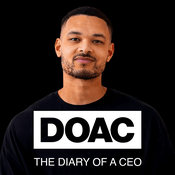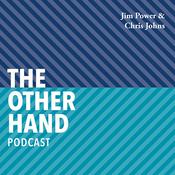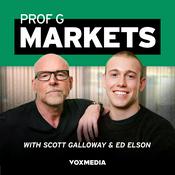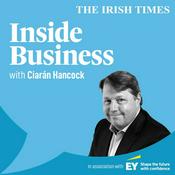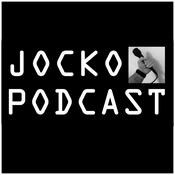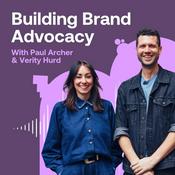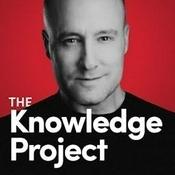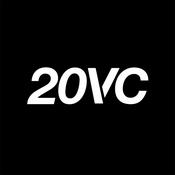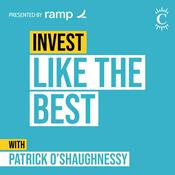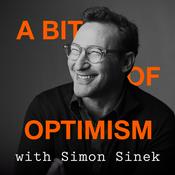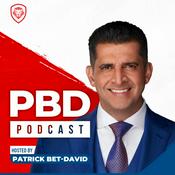Global Medical Device Podcast powered by Greenlight Guru
Greenlight Guru + Medical Device Entrepreneurs
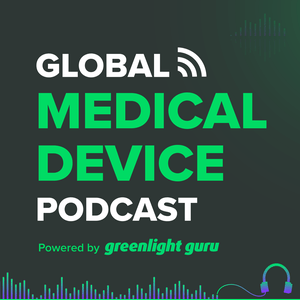
Latest episode
Available Episodes
5 of 380
- #436: Do ISO 13485's Production Controls apply to SaMD?This episode tackles the complex challenge of applying the hardware-centric clauses of ISO 13485 to Software as a Medical Device (SaMD). Adnan Ashfaq, founder of Simply Medica, joins Etienne Nichols to dissect how traditional standards intended for physical manufacturing must be creatively interpreted for the virtual world of software development, where apps update weekly and cloud-based systems evolve in real-time. The conversation zeroes in on the often-muddy areas of production and service provision (Clause 7.5), emphasizing that these clauses are far from non-applicable, requiring a "virtual manufacturing space" mindset.A significant focus is placed on the Software of Unknown Provenance (SOUP), treating these building blocks as purchased components that require robust supplier evaluation and validation, bridging Clause 7.5 (production) with Clause 7.4 (purchasing). The discussion extends to crucial concepts like the Software Bill of Materials (SBoM), the complexity of Agile vs. Waterfall approaches within the standard's framework, and the essential role of the new FDA Computer Software Assurance (CSA) guidance in risk assessment.Beyond production, the experts explore the application of resource management (Clause 6), specifically addressing infrastructure, contamination control (malware/ransomware), and the critical need for a well-documented Design Transfer to Production (Clause 7.3.8) evidenced by a complete software release package, including all 62304 requirements. The episode provides actionable insights for quality and compliance professionals struggling to maintain speed and innovation while strictly adhering to regulatory requirements.Key Timestamps01:45 - The changing landscape: Why traditional MedTech rules struggle with modern software updates.03:50 - Historical context of ISO 13485 and its non-distinction between hardware/software.05:05 - Starting Point: Clause 7.5 (Production and Service Provision) and the "Virtual Manufacturing Space" concept.06:20 - Unpacking Software of Unknown Provenance (SOUP) and its link to Clause 7.4 (Purchasing).08:35 - The necessity of validating the development environment (GitHub/GitLab) and building blocks.11:10 - Applying Clause 4.1.6 (Software Validation) to SOUP items and master validation plans.12:20 - Applicable vs. Non-Applicable Clauses: Sterilization/Cleanliness vs. Installation.13:55 - Clause 4.2.3 (Medical Device File) for SaMD: E-labels, UDI, System Architecture, and SBoM.16:30 - Cybersecurity controls and the manufacturer's responsibility for identifying state-of-the-art standards.17:35 - Defining "Production" for continuously updating software and managing significant vs. non-significant changes.20:15 - Clash of Standards: Agile development, ISO 13485, and the missing documentation for version control risk assessment.21:30 - Clause 6.3 & 6.4 (Resource & Work Environment): Looking at data security, access controls, and contamination (malware/ransomware).24:45 - Clause 7.3.8 (Design Transfer to Production): The need for a formal software release package and the importance of the Software Design Trace Matrix.26:00 - The 16 essential documents needed to meet IEC 62304 requirements.27:10 - Production controls when the user influences the outcome (customizable features,...--------43:05
- #435: ICYMI (In Case You Missed It!) Becoming a Regulatory Affairs ProfessionalIn this episode of the Global Medical Device Podcast, Etienne Nichols is joined by Kavetha Ram, a seasoned expert in health and pharmaceutical sciences and the regulatory department leader at Spectra Medical Devices. Together, they delve into how new regulatory affairs professionals can get started in a career of medical device regulations and the shifting field of MedTech. The discussion offers a roadmap for professionals to navigate and thrive amidst these shifts. The episode is a treasure trove of knowledge for anyone looking to stay ahead in the MedTech realm.Key Timestamps:[00:00:30] Introduction to Kavetha Ram and the episode's focus[00:05:15] Discussion on the challenges and opportunities of new regulations[00:10:40] Insights into the importance of confidence and adaptability in the regulatory field[00:15:20] Kavetha's journey and advice for emerging professionals[00:25:00] The role of innovation and collaboration in MedTech advancements[00:35:10] Strategies for professionals to stay relevant and proactiveQuotes:"Regulations are not just hurdles; they are stepping stones to innovation and safety in MedTech." - Kavetha Ram"Embracing change in regulations is not an option but a necessity for MedTech's future." - Etienne Nichols"Diversity in teams isn't just about varied backgrounds; it's about unlocking unique perspectives that drive innovation." - Kavetha RamKey Takeaways:Insights into MedTech Trends:Regulatory changes are both a challenge and an opportunity for innovation.Practical Tips for MedTech Enthusiasts:Stay updated with regulatory changes and understand their implications.Engage in continuous learning and skill development.Foster collaboration across disciplines to enhance innovation.References:Kavetha Ram's LinkedIn ProfileEtienne Nichols' LinkedIn ProfileGreenlight GuruQuestions for the Audience:"What advice do you have for budding Regulatory Affairs professionals?"Reach out to us and let us know what you thought of the episode at [email protected], if you enjoyed this episode, please leave us a review on iTunes!Sponsors:This episode is brought to you by Greenlight Guru, the only quality management software designed specifically for the medical device industry. Greenlight Guru's platform streamlines product development and compliance, making the process more efficient and less risky. Discover how Greenlight Guru can accelerate your product development at www.greenlight.guru.--------44:35
- #434: ICYMI (In Case You Missed It!) Project Management In MedtechThis episode of the Global Medical Device Podcast features a compelling conversation with Perry Parendo, a seasoned expert in product development and project management within the MedTech sector. Host Etienne Nichols and Perry delve into the challenges and opportunities facing medical device development, emphasizing the critical role of agile practices, risk management, and the necessity for a patient-focused approach. The discussion sheds light on how companies can navigate regulatory landscapes, manage project risks, and drive innovation to enhance patient care.Key Timestamps:00:00:15 - Introduction of Perry Parendo and the episode's focus00:03:50 - Discussing the challenges of MedTech product development and regulatory hurdles00:12:20 - Agile methodologies vs. traditional project management in MedTech00:22:35 - The importance of risk management and Monte Carlo simulation in project planning00:34:10 - Perry's perspective on innovation, compliance, and balancing project priorities00:45:55 - Strategies for efficient and effective product development processesQuotes:"We're so focused from a compliance point of view on patient and health risk, we're not focused on project risk. And when I worked in the defense industry, we were hugely focused on project risk," Perry Parendo"There's waterfall, there's agile, there's Toyota, there's set based design, and there's APQP in the automotive industry. They're all a blend. There's no organization that's doing purely the theoretical of any one of those processes," Perry ParendoTakeawaysInsights on MedTech Trends:The convergence of agile and traditional methodologies tailored to MedTech's unique demands.The rising importance of advanced risk management techniques, like Monte Carlo simulations, in navigating project uncertainties.A call for innovation that transcends regulatory compliance to genuinely benefit patient care.Practical Tips for Listeners:Adopt a flexible approach to project management by integrating various methodologies based on project needs.Prioritize risk management early in the development process to foresee and mitigate potential challenges.Always align product development objectives with the ultimate goal of improving patient outcomes.Questions for Future Developments:How will evolving regulatory standards shape the next generation of medical devices?What role will patient feedback play in the design and development of future MedTech innovations?Can MedTech sustain its pace of innovation while ensuring safety and compliance?References:Perry Parendo on LinkedInEtienne Nichols on LinkedInBehavioral Grooves podcast with Annie Duke - Thinking in BetsBook - Someday is Today, Ron RichardYoutube video - the Heartbeat of New Product DevelopmentQuality Culture for Product Design SuccessDesign News Columns--------1:02:20#433: ICYMI (In Case You Missed It!) Climbing the Medtech Ladder - How to Get to the TopIn this episode of the Global Medical Device Podcast, we’re joined by Elena Kyria, a talent acquisition specialist and CEO of Elemed. Elena delves into what it takes to climb the career ladder in the medtech industry, whether you're early or late in your career journey. Our host, Etienne Nichols, engages in a rich discussion on career paths, leveraging personal strengths, and the importance of networking and personal branding.Quotes"If you're not talking about the value that you add, how is anybody going to know what impact you're having?" - Elena Kyria"Everything's uncertain really, isn't it? What you've got to have is a clear sense of forwards and just have a goal." - Elena Kyria"Nobody goes to the gym and looks at the weights and gets fit. You have to do the reps." - Elena KyriaTakeawaysNetworking is Key: It's not just what you know, but who knows you and what they know you're doing.Visibility of Achievements: Share your successes within your company; if you don't, others may not recognize your contributions.Defining Success: Success doesn't always mean reaching the VP level; it's about personal satisfaction and contribution.Strengths and Weaknesses: Focus on your strengths but be aware of your weaknesses and compensate with your team.Career Paths: Understand the different career paths (leadership, expert, generalist) and what they entail for growth.Communication Skills: Strong communication skills are paramount for leadership and for translating technical details to a broader audience.Continuous Learning: Always seek new knowledge and experiences, no matter where you are in your career.Adaptability: Be prepared to pivot and adapt to changes within the industry and your career.Take Action: Don't just reflect on advice; apply it to make actual changes in your career approach.Reference Links:Elena Kyria's LinkedInElemedWorking GeniusGreenlight GuruEtienne Nichols' LinkedInRemember to engage with the hosts and guests on LinkedIn for feedback and further discussions. Don’t forget to leave a review on iTunes!*Interested in sponsoring an episode? Use this form and let us know!--------1:10:28#432: China MedTech Compliance: Regulatory Risks, Rewards, & Strategy with Elaine TanThis episode dives into the complex and often misunderstood MedTech market in China, featuring Elaine Tan, creator of MedTech Chopsticks, who translates the nation’s stringent regulatory language into actionable insights. Elaine and host Etienne Nichols discuss the substantial risks and rewards of bringing a medical device to China, highlighting the country's rapid execution, intense internal competition, and the shift from low-end manufacturing to a focus on high-level innovation. A key risk is that existing international certifications (like ISO and IEC) do not guarantee compliance, requiring local type testing and adherence to specific national standards.The conversation addresses how global medical device companies can structure their strategy amid ongoing geopolitical shifts and the "China for China" policy, which favors domestic products through initiatives like the Volume-Based Procurement (VBP). Strategies such as the dual-strategy approach—localizing low-consumable manufacturing while protecting high-technology IP through joint ventures or careful CMO/CDMO selection—are explored as pragmatic ways to secure market presence and margin. Understanding the regulatory landscape, particularly the NMPA's 2021 overhaul, is crucial for success.Finally, Elaine provides practical guidance for regulatory professionals intimidated by the market. This includes understanding the specific regulatory and clinical pathways, performing a gap analysis against Chinese standards (Product Technical Requirements or PTR), and the critical process of selecting and qualifying a local partner/agent. Elaine reveals a specific, often overlooked hurdle: the agent must possess an NMPA-approved CA (Certification Authorization) USB key to electronically submit registration files on behalf of the foreign manufacturer, a critical piece of the submission puzzle. The discussion also touches on leveraging special zones, like the Hainan Free Trade Zone, for crucial real-world data collection applicable to the Chinese population.Key Timestamps[02:40] Introduction to Elaine Tan, MedTech Chopsticks, and the show’s focus on the China market.[05:05] High-level risks and rewards: complexity, lengthy registration, local testing requirements, and IP concerns.[08:08] Discussing the NMPA's 2021 regulatory overhaul and the geopolitical shift toward "China for China."[11:00] The Dual Strategy approach: balancing low-end localization with protecting high-tech IP.[14:48] Using CDMOs/CMOs for pilot projects to manage financial investment risk.[16:20] Leveraging the Hainan Free Trade Zone (Bo’ao region) for pre-market clinical data collection and urgent needs product access.[18:42] Ethological differences and their impact on clinical data justification (e.g., Pulse Oximeters).[20:17] NMPA predicate search: The importance of using the Chinese Classification Catalog to find registered, local predicate devices.[23:00] Guidance for overwhelmed regulatory professionals entering the China market: Clinical strategy and Product Technical Requirements (PTR).[25:52] Pitfalls in partner selection: The necessity of the NMPA-approved CA (Certification Authorization) USB key for submissions.[29:30] Partner qualification: Ensuring the agent can support Post-Market Surveillance (PMS) and QMS self-inspection requirements.[30:52] Final pitfall: International compliance (ISO/IEC) does not automatically ensure China...--------40:20
More Business podcasts
Trending Business podcasts
About Global Medical Device Podcast powered by Greenlight Guru
The Global Medical Device Podcast, powered by Greenlight Guru, is where today's brightest minds in the medical device industry go to get their most useful and actionable insider knowledge, direct from some of the world's leading medical device experts and companies.Podcast websiteListen to Global Medical Device Podcast powered by Greenlight Guru, The Diary Of A CEO with Steven Bartlett and many other podcasts from around the world with the radio.net app

Get the free radio.net app
- Stations and podcasts to bookmark
- Stream via Wi-Fi or Bluetooth
- Supports Carplay & Android Auto
- Many other app features
Get the free radio.net app
- Stations and podcasts to bookmark
- Stream via Wi-Fi or Bluetooth
- Supports Carplay & Android Auto
- Many other app features


Global Medical Device Podcast powered by Greenlight Guru
Scan code,
download the app,
start listening.
